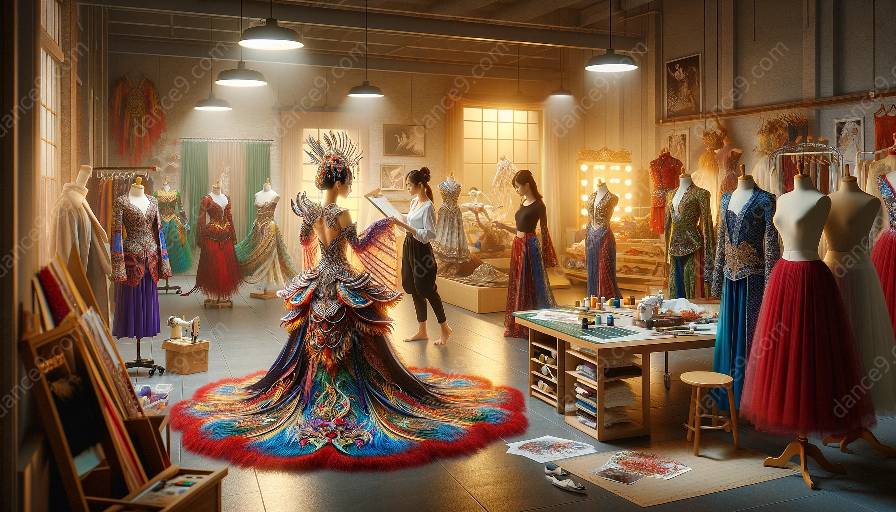Dance is not only a form of expression but also a reflection of the cultural and historical contexts in which it exists. The art of dance and costume design are deeply intertwined, with historical context playing a crucial role in shaping the aesthetics and symbolism of dance costumes.
Understanding the Historical Context
Historical context refers to the time, place, and social environment in which a particular dance form originated or evolved. It encompasses the traditions, customs, and beliefs that influenced the clothing and adornment of people in those times. For dance costume designers, delving into historical context provides a wealth of inspiration and a deeper understanding of the cultural significance behind different garments and accessories.
Enhancing Authenticity and Storytelling
Costume design in dance seeks to capture the essence of a particular era or cultural period, bringing authenticity and historical accuracy to the stage. By carefully researching and interpreting historical dress codes, designers can imbue the costumes with nuances that convey the spirit of the time and help tell the story being portrayed through dance.
For example, a dance piece set in the Baroque period might feature elaborate gowns, corsets, and wigs, reflecting the opulence and formality of that era. The intricate details and fabric choices in the costumes contribute to the visual narrative, transporting audiences to a specific historical moment through the dancers' attire.
Incorporating Symbolism and Cultural Significance
Costumes play a significant role in communicating themes and cultural symbolism in dance. In many traditional dance forms, such as ballet, folk dance, or classical Indian dance, costumes are steeped in symbolism and carry specific meanings derived from their historical origins. By understanding the historical context behind these symbols, costume designers can create garments that resonate with the narrative and aesthetic principles of the dance form.
Moreover, historical context informs the choice of colors, patterns, and motifs in costumes, allowing designers to infuse deeper layers of meaning and cultural references into their creations. Whether representing societal status, religious rituals, or folk traditions, the costumes become visual embodiments of history and heritage, enriching the dance performance with cultural authenticity.
Embracing Evolution and Innovation
While historical context serves as a guiding force, costume design in dance also embraces evolution and innovation. Contemporary choreographers and costume designers often draw inspiration from historical elements while infusing modern sensibilities and artistic expressions. This fusion of historical context with contemporary interpretations gives rise to visually captivating costumes that honor tradition while exploring new possibilities.
By reimagining historical aesthetics through innovative design techniques and materials, dancers and designers can create compelling visual narratives that connect the past with the present, bridging the gap between tradition and modernity.
Conclusion
The influence of historical context on costume design in dance is a multifaceted and compelling journey that enriches the visual storytelling of dance performances. By recognizing the cultural, social, and artistic influences of bygone eras, costume designers and choreographers bring depth, authenticity, and symbolism to the stage, allowing the audience to witness history come alive through the art of dance.











































